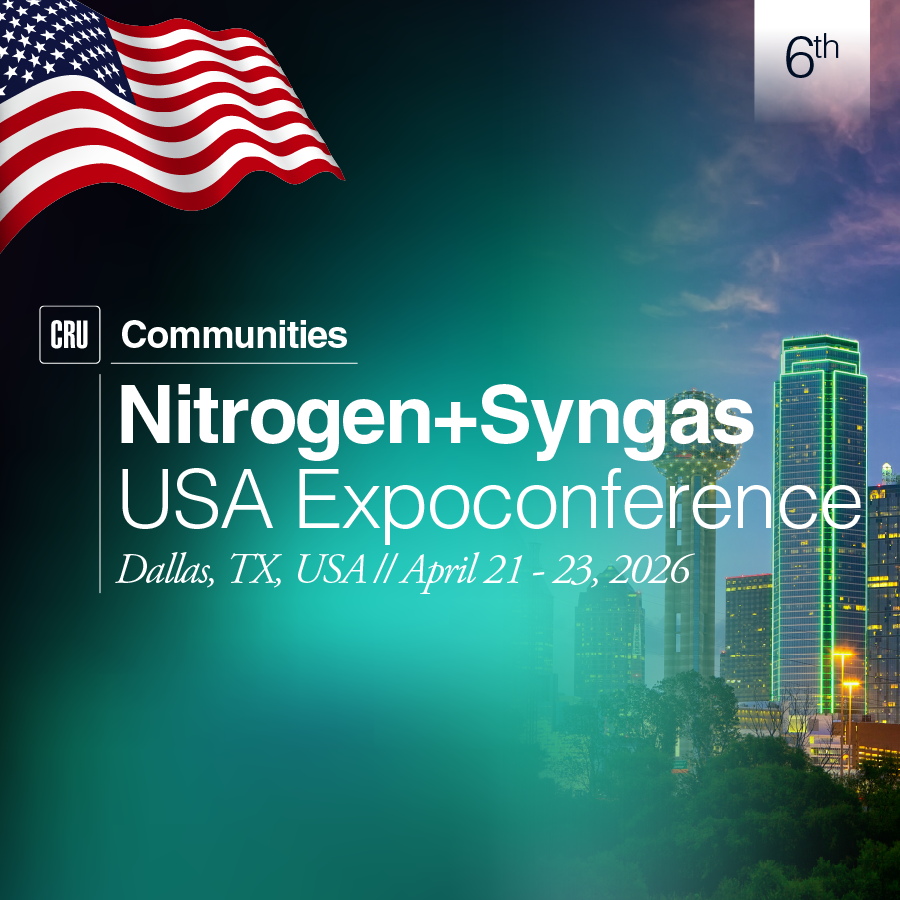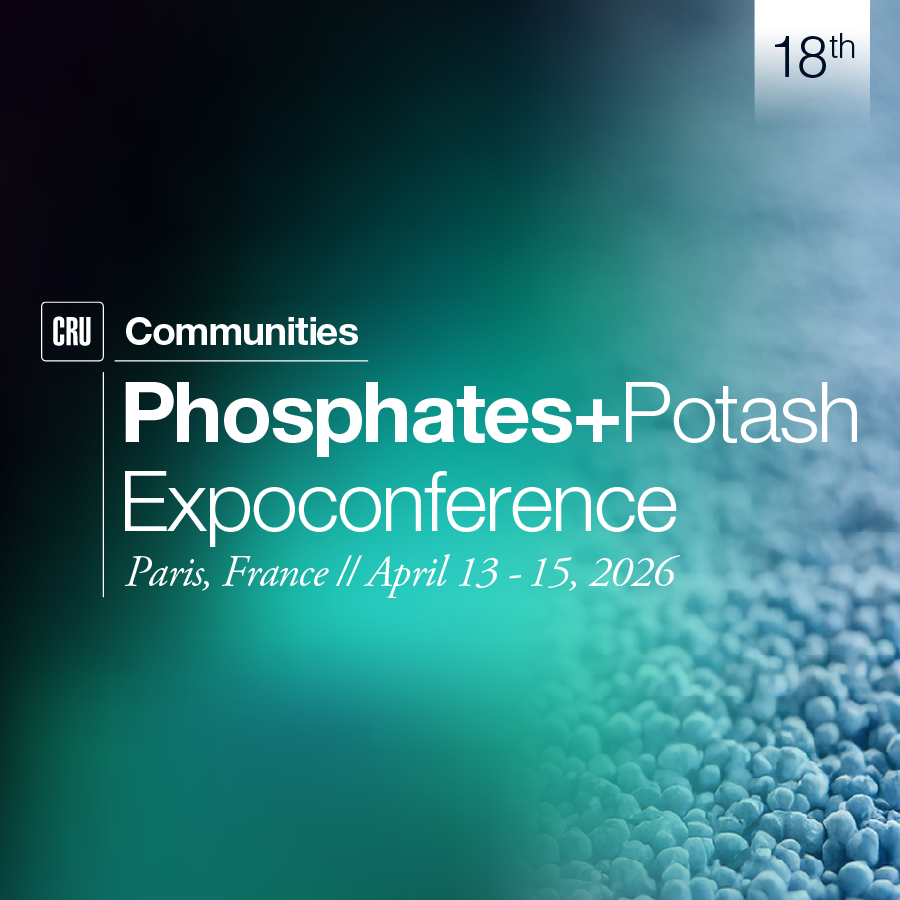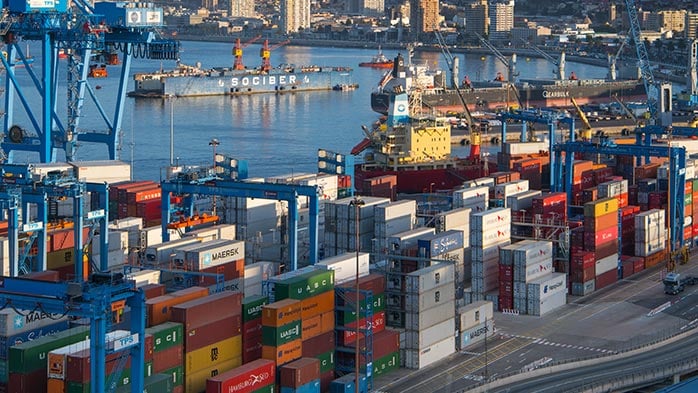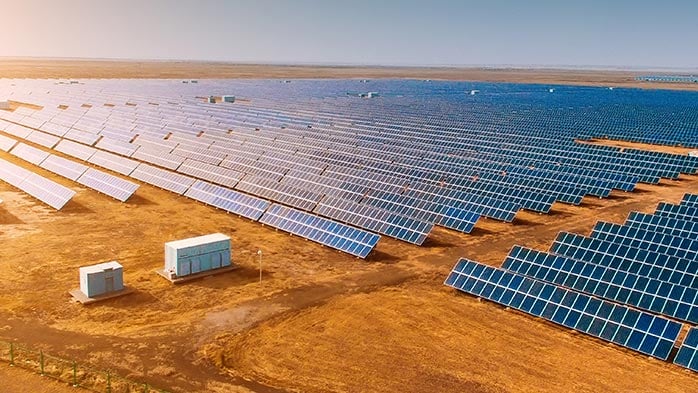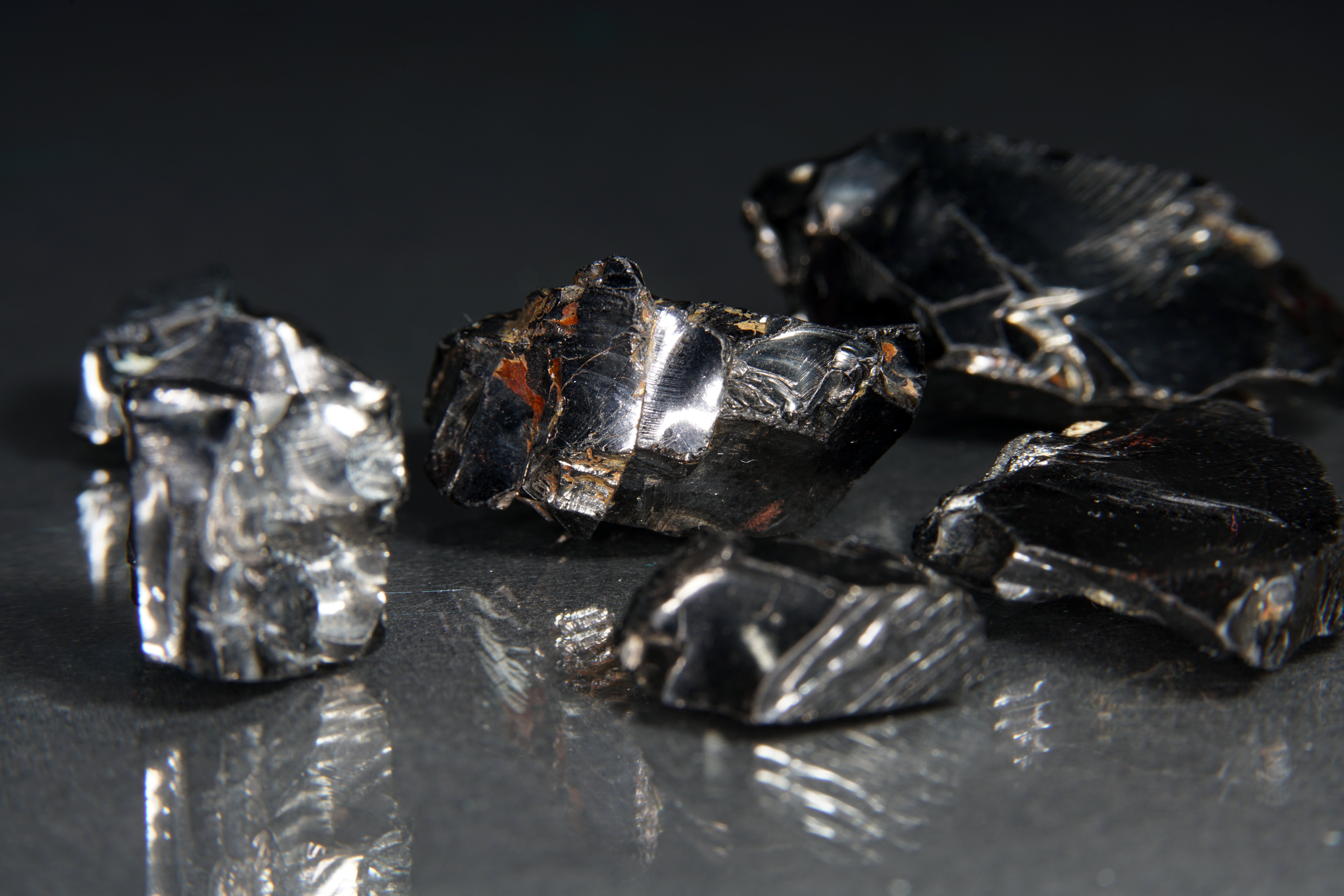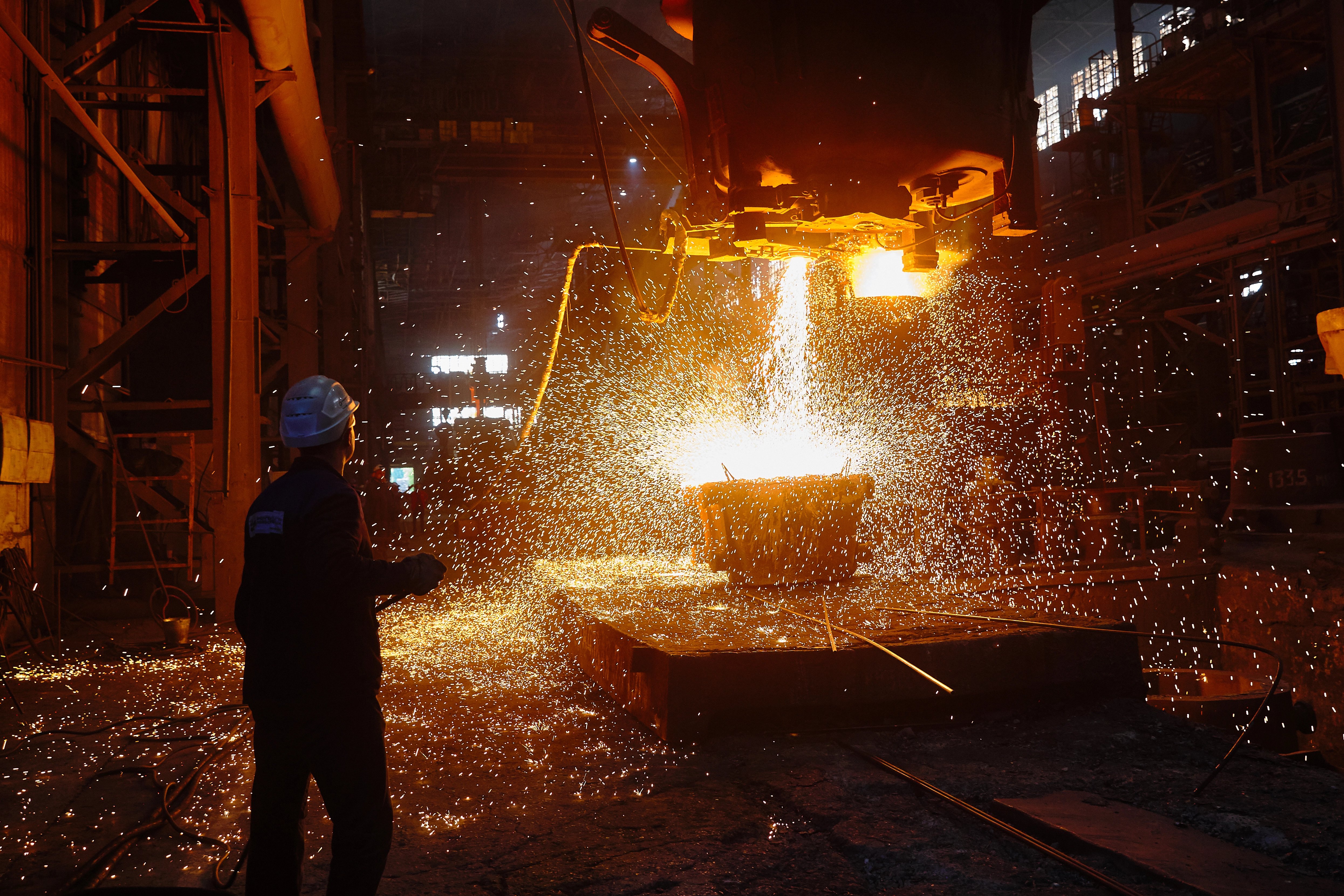Morocco is a significant player in the phosphate rock and fertiliser sectors, with the country controlling over 70% of the world’s known phosphate rock reserves. Mining beyond phosphate rock is limited to small base and battery metal deposits that fall well behind other well-known mining regions.
Phosphate rock and its uses
Phosphate rock is a sedimentary rock rich enough in phosphates to produce phosphorus pentoxide, P2O5. Phosphorus is a key element required for plant growth, with over 90% of processed phosphate rock used to produce phosphate fertilisers. The P2O5 can either be combined with nitrogen-bearing ammonia to create mono-ammonium phosphate (MAP) and di-ammonium phosphate (DAP) fertilisers, a source of both nitrogen and phosphorus, or kept separate to create triple superphosphate (TSP).
Further information on the uses of phosphate rock along with current market trends can be accessed by subscribers to CRU’s quarterly Phosphate Rock Market Outlook here.
Global significance of Morocco’s phosphate rock resources
Morocco has the world’s largest phosphate rock reserves, totalling over 50 billion tonnes. This volume is significantly higher than any other nation with second place China estimated to have reserves of only 3.2 billion tonnes of phosphate rock.
Morocco’s high grade rock contains more phosphate per tonne, resulting in it selling at a premium to lower grade rock from other regions as it is preferred by facilities producing phosphoric acid. Low grade rock is generally used to make single super phosphate (SSP) fertiliser as it requires more processing and potential alteration of plant at current acid facilities to produce phosphoric acid. For this reason, Moroccan high grade phosphate rock sells at a price premium, marked by the Morocco (68-72% BPL) Spot/Contract price.
Importance of OCP to global phosphate markets
OCP is the Moroccan state-owned phosphate rock miner, phosphoric acid manufacturer and phosphate fertiliser producer. The company has sole access to Morocco’s phosphate rock reserves, operating all three of Morocco’s operating phosphate rock mines at Boucraa, Gantour (Ben Guerir) and Khouribga (Sidi Chennane). These mines are linked to OCPowned and operated phosphate fertiliser production facilities at three ports on the Moroccan Atlantic coast.
OCP controls enough of the global phosphate rock market that its strategic decisions have a significant impact on global supply and prices for both rock, and to a lesser extent, fertilisers.
This high level of influence over the phosphate rock market has allowed OCP to sustain high prices for high grade rock from 2021 into 2022. OCP's pricing strategy is reflective of the nutrient content in its rock product that has resulted in lower exports. Price support from this strategy, coupled with a reduction in Russian high grade rock exports following the invasion of Ukraine, has extended the period of elevated prices for Moroccan phosphate rock while lower grade rock from other regions saw much more significant price declines.
Morocco a minor player in the cobalt market
Morocco’s sole cobalt producing asset is the Bou-Azzer cobalt mine, owned by Managem and located 120km south of the town of Ouarzazate. CRU expects Bou-Azzer to produce 1,902 tonnes of cobalt in 2023, the entirety of Morocco’s mine output, ranking the country as the 14th largest global cobalt producer. Global cobalt production is, however, very topheavy with 1,902 tonnes representing only 0.9% of global cobalt production. Production is dominated by the DRC, which is expected to produce 153 kt cobalt in 2023, 69% of global mine supply.
Morocco is thought to have 13 kt of identified cobalt reserves, 0.2% of global identified reserves. The Moroccan government is looking to increase cobalt production. However, production developments are unlikely to come from the mining sector due to limited geological potential. Managem has, however, entered a five-year deal with Glencore to recover cobalt, nickel and lithium from black mass, the product of EV battery disassembly, at their CTT Hydrometallurgical Refinery at Guemssa.
Subscribers to CRU’s Cobalt Market Outlook can find further information on global cobalt production and consumption here.
Discovered base metal deposits lack the scale of other regions
There are a number of operational base metal mines in Morocco, targeting principally zinc, lead and copper. The projects are for the most part located in the Central Moroccan Hercynian Massif and target volcanogenic massive sulphide, hydrothermal vein, and carbonate hosted deposit types.
While the deposits are economical, they tend to be smaller than the tier one deposits found in other mining jurisdictions. As such Morocco ranks as a relatively small base metal producer. CRU expects Morocco to produce 32 kt of lead and 42 kt of zinc in 2023, ranking the country as the world’s 17th and 24th largest producer respectively. Moroccan copper output is expected to be 57 kt in 2023, 30th in terms of global mine supply. While exploration for base metals continues CRU does not forecast any sharp increases in production in coming years for these commodities.
How will Morocco evolve its natural resources in coming years?
While mineral exploration does continue at pace in Morocco, focusing on higher value base and battery metal deposits, major developments in coming years will be in the phosphate sector.
CRU understands that OCP is increasing its TSP output through the construction of new facilities at its Jorf Lasfar port facility, discussed in detail here. This move is a concerted effort by OCP to pivot strategy and increase the use of phosphate rich fertilisers. OCP believes the latest agronomic research suggests separate application of nitrogen and phosphorus improves crop yields. Furthermore, certain crops such as soybeans have lower nitrogen demand with application of MAP resulting in excess nitrogen availability.
Production of TSP also has some key business advantages for OCP over DAP and MAP. If OCP were to commission all the planned TSP production lines at Jorf Lasfar they would account for over half the current global TSP market. TSP also allows them to be much more self-sufficient and profitable as it requires only phosphoric acid and phosphate rock, removing the need for costly ammonia imports.
Subscribers to CRU’s Phosphate Rock and Phosphate Fertiliser Market Outlooks can find more in-depth analysis of Moroccan phosphate rock and fertiliser activity here and here.
If you’re interested in more analysis and CRU’s view on other African mining nations see
our recent webinar ‘Africa in the spotlight, the global race for critical minerals intensifies’




